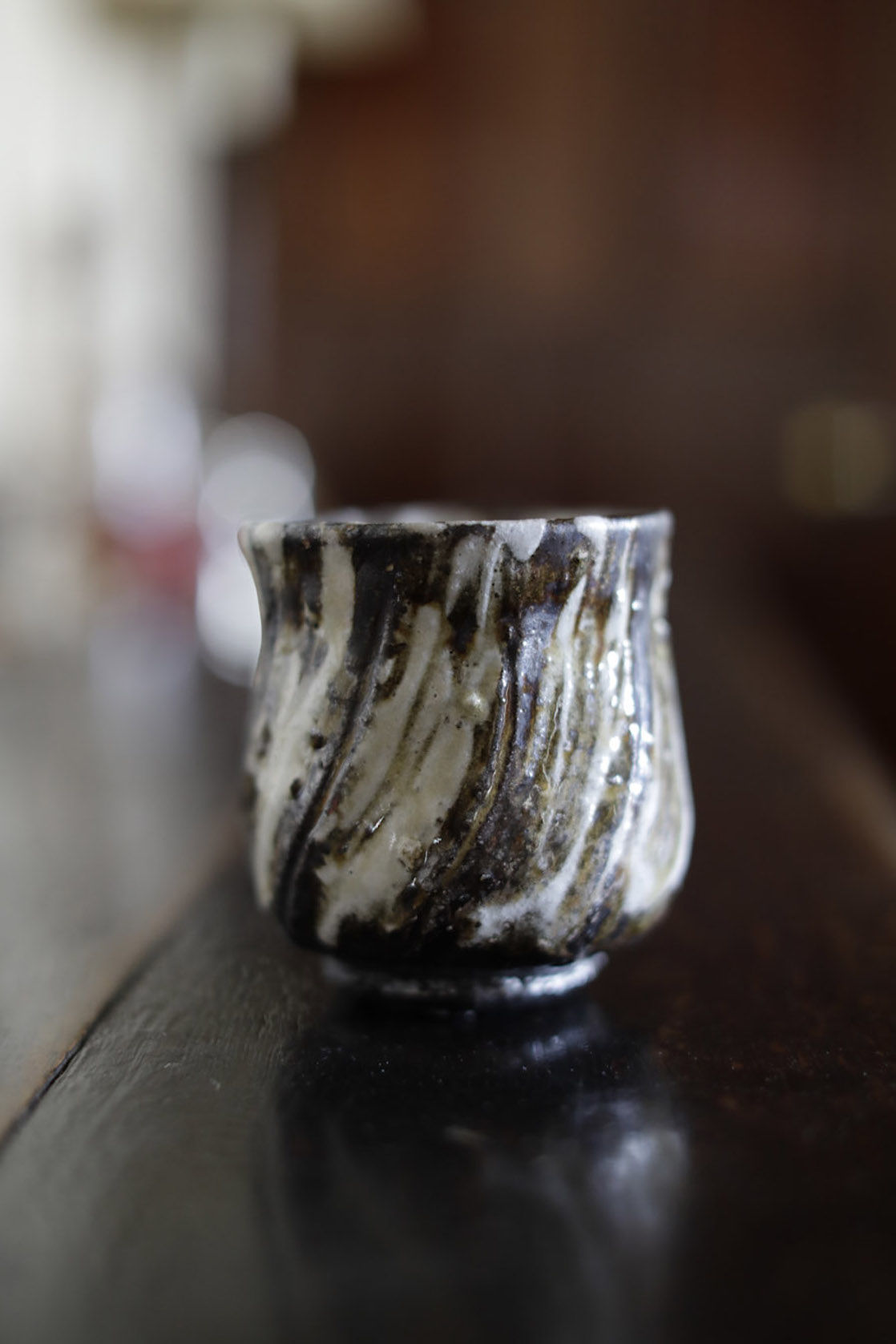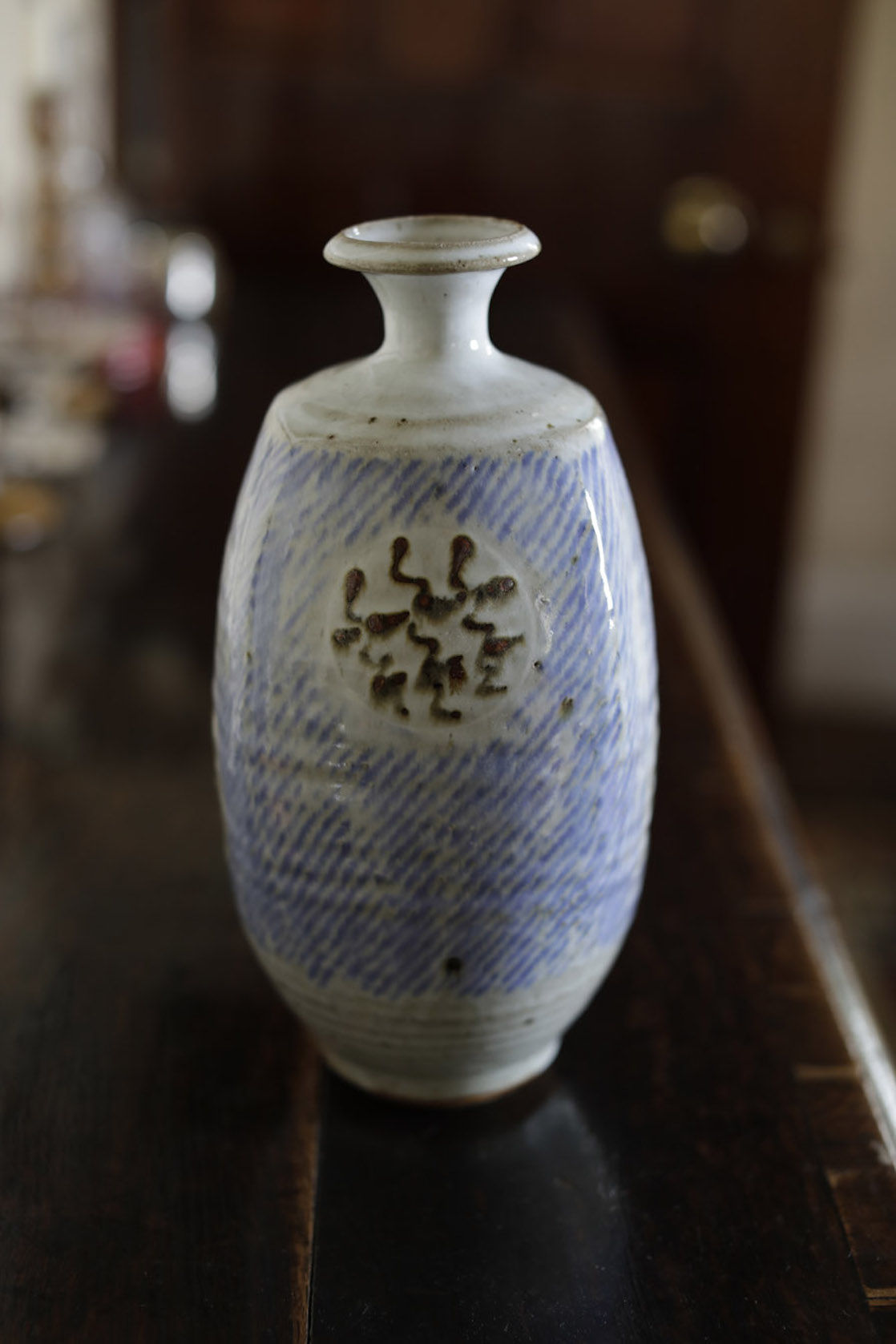Welcome to Ceramic Review
Ceramic Review is the magazine for contemporary and historical ceramics, ceramic art and pottery.
Ceramic Review Issue 326
March/April 2024
Ceramic Review is the magazine for contemporary and historical ceramics, ceramic art and pottery.
March/April 2024
A life-long supporter of the CPA, Viscount Eccles is donating some of his collection of studio pottery in aid of the Craft Pottery Charitable Trust. Alex McErlain visits him to see the collection and find out more about his generous bequest

Vessel by Duncan Ross; Photo by Layton Thompson
Collectors are the lifeblood of the ceramic world,’ declared the late Emmanuel Cooper. Potters need people to buy their work and the more regular customers they acquire the better. Those who take a close interest in buying studio pottery often inadvertently end up becoming collectors as they slowly surround themselves with pots. Once a collection has been built, usually over many years, it’s not uncommon for the collector to ponder what may happen to it in the future. Should it be passed down in the family, auctioned, or donated to a museum? Viscount Eccles, now well into his eighties, has come up with a novel idea, generously donating a substantial portion of his fine collection of studio pottery to the Craft Potters Association (CPA), to be sold with the proceeds going to the Craft Pottery Charitable Trust (CPCT), which in turn will help support future generations of potters.
The Casson he has selected is a monumental jug, wood-fired salt glaze with swathes of slip in blues and browns. I’m sure Casson would have been proud to know that it was once more being offered for sale to benefit the trust he founded
I visited Viscount Eccles at his London flat to discuss the donation and his interest in studio pottery. It’s always fascinating to visit the home of a private collector as you frequently come across unusual juxtapositions of items rarely seen together in museums and galleries. Early in my visit I encountered a table display with Lucie Rie pots sitting alongside works by Sutton Taylor, Emmanuel Cooper, Ursula Morley Price and Ewen Henderson, different genres from differing periods, collectively complementing each other. The displays provoke thought and of course conversations about the objects and may get the visitor looking at work from a new perspective. This is one of the joys of collecting – communicating about your passion and perhaps interesting others in it.
INHERITED INTEREST
Viscount Eccles grew up living amongst a growing collection of studio pottery as his father had been collecting since the early 1950s. The first Viscount Eccles was minister for the arts and his collection included notable works by Lucie Rie, Elizabeth Fritsch, Alison Britton and Jaqueline Poncelet. He wrote a book titled On Collecting, which was published in 1968. In this environment, surrounded by pots, his children developed an interest and later began their own collections.
The current Viscount’s collection contains fine works by many of the leading potters of the past 60 years. It was his good fortune to begin collecting during the 1960s onwards, during the heyday of studio pottery in Britain. There were many innovative developments to follow, new galleries and exhibitions constantly opening and in those early years modest prices were charged for top quality work. The CPA, formed in 1958, soon had a gallery where members could sell their work. Asked about where he purchased his pots, the Viscount replies: ‘Well, where else would you go but to the CPA gallery in Marshall Street? It was a very nice shop and they had a large selection.’ He consequently became involved with the Association after making regular visits and getting to know staff and exhibiting potters, proudly adding: ‘I’m an honorary fellow of the CPA amongst very few non-potters.’
He also used to visit the Casson Gallery in Marylebone High Street, while holidays to Cornwall inevitably took in trips to local potteries. ‘We visited Wenford Bridge when Michael Cardew was there,’ he explains. ‘We happened to visit on his 80th birthday and he danced a jig down the road. He gave my wife a dish. I’ve had tremendous fun and lots of pleasure out of pots,’ he adds. ‘I think the whole pottery movement is wonderful – it’s exciting that we have so many people making their own thing.’

Work by Ruthanne Tudball; Photograph by Layton Thompson

Work by Mike Dodd; Photograph by Layton Thompson
The collection is rich in objects and memories, but his thoughts have now turned to the future prompted by an imminent house move. ‘One of the reasons for mounting this sale is we are moving out of our house in Yorkshire, which is a large property with lots of rooms and lots of pots,’ the Viscount explains. ‘The family are taking quite a lot – both the children and the grandchildren, but the sale is a gratifying way of reducing the collection.’
CERAMIC ADVOCATE
Viscount Eccles is a trustee of the CPCT and a great advocate of the work it performs, believing it was very far-sighted of the people who started it. The founder of the trust was Michael Casson, who together with other CPA members established it in 1991. Since that time it has raised funds through tombolas, received personal bequests and distributed grants annually to numerous applicants to support educational activities associated with ceramic activity. Grants are made following scrutiny by a group of trustees and are for relatively modest sums, up to £1,000 – enough to make a difference to an individual’s ambition at a strategic moment, or as Viscount Eccles put it: ‘If they hit the right spot at the right time. There is a moment in the journey of a potter when being given an opportuntity to do something specific can make all the difference to their career – the CPCT helps to support this.’ In the past grants have been given for a wide variety of projects such as developing a website, building a new kiln, or going on a ceramic course in Denmark.
I asked what he hoped the sale of his collection might achieve. ‘It rather depends how much money it raises, but I would like to think they could invest it alongside their other assets,’ he explains. ‘Then maybe it will inspire other people to assist the charity. Building the fund and investing it in suitable charitable investments, the sort of composite things that are approved by the Charities Aid Foundation, is a long-term endeavour. We talk about fundraising in the trust meetings and this donation is designed to be a practical contribution to their assets.’
PREMIER PIECES
As to what exactly will be included in the sale, at the time of writing Eccles was still deliberating on many items. He envisages donating around 80 pieces altogether. ‘I’m intending on including a few premier pieces, hoping that one or two people will come and pay exceptional prices because they are backing the charity,’ he says. He definitely wants to include pots made by some of the original trustees including Michael Casson, Emmanuel Cooper, Alan Wallwork and Liz Gale. The Casson he has selected is a monumental jug, wood-fired salt glaze with swathes of slip in blues and browns. It’s an archetypal example of the potter’s work, bold in form, executed with consummate skill and fired in that doubly risky manner in a wood- fired salt glaze kiln. Casson loved these risky firings and the possibilities they held for subtle enhancement of the form. Not only was the salt doing its work with the slips, but there is the added bonus of marks produced by flying wood-ash. This particular example has it all and I’m sure Casson would have been proud to know that it was once more being offered for sale to benefit the trust he founded.
Before leaving I asked if he had any favourites amongst his collection and the Viscount replied: ‘All comparisons are odious and some comparisons are more odious than others. I think the individuality of the work stands up on its own. I don’t think comparisons help you, you relate to the pot and the potter and if you like it that’s fine. You look at a Lucie Rie for example and can’t but think this lady really knew what she was doing.’
We can look forward to the sale of an array of fine pots drawn from a notable period and hope that the potential buyers have the same generosity of spirit as the Viscount.
The Eccles Collection, 12–23 November, cpaceramics.com For more details about the CPCT visit craftpotters.com
This article is featured in issue 300 (November/December 2019) of Ceramic Review.

Work by William Plumtree; Photograph by Layton Thompson